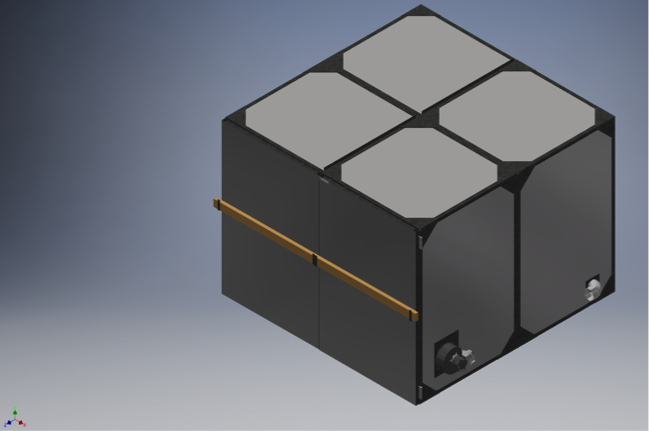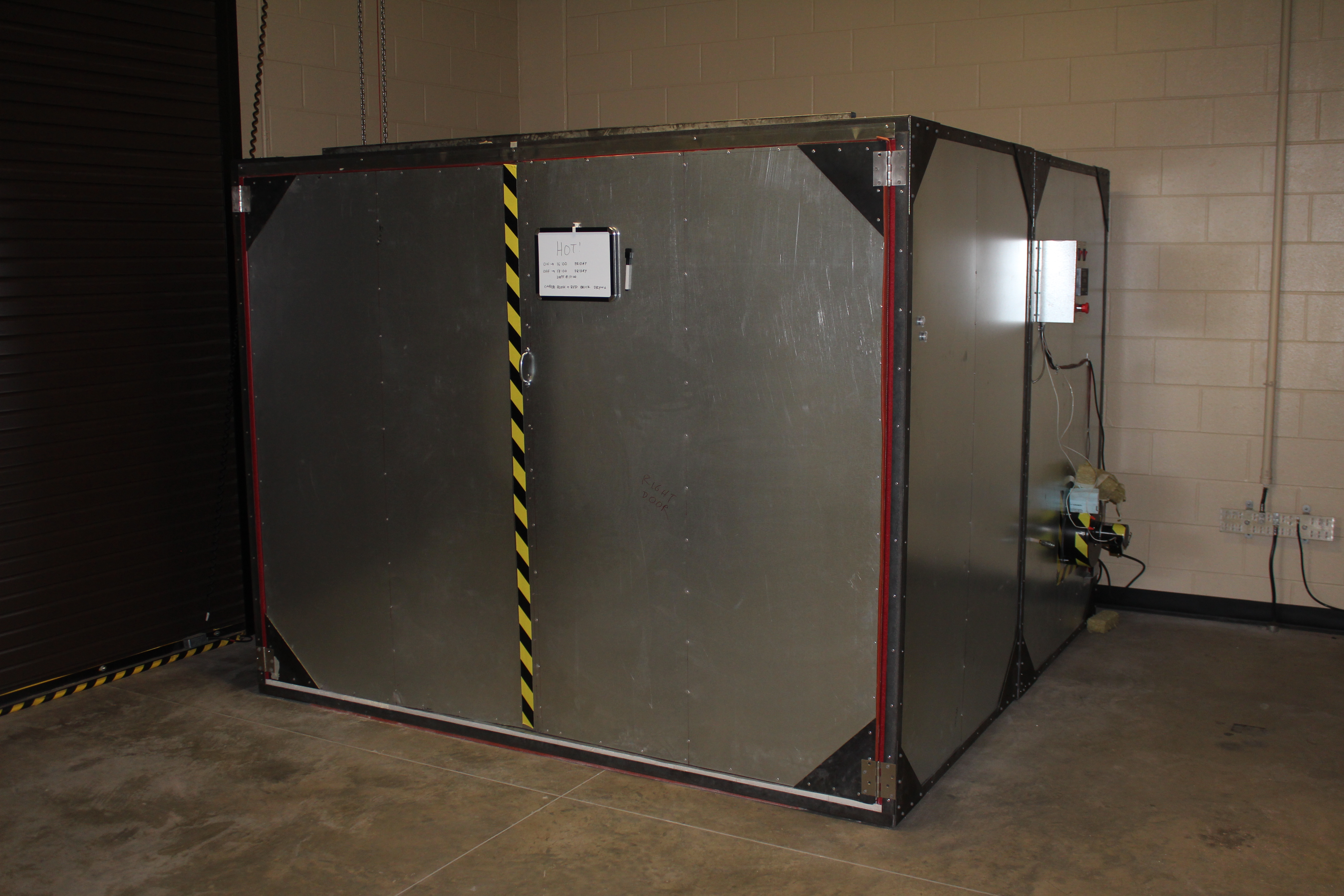Composite Curing Oven
Due to the fact that the university lab I work in is a rapid prototyping lab, my associates and I have a need for composite curing equipment. Curing standard fiberglass sheets in a vacuum bag and leaving it in a room temperature environment for multiple hours is only useful for a few applications. To operate as a true rapid prototyping lab, we require a large oven to cure fibrous composites that are pre-impregnated with the resin, or “pre-preg.”
In the immediate future, we will be creating products with a maximum length of about 8 feet. Because of this, the basis of the oven design was an 8 foot by 8 foot oven with a height that allowed for an average lab associate to enter with ease. We decided on a height of 6 feet. Using Autodesk Inventor, Christopher Simpson and I were able to create a viable design.

The design itself is modular. The front and back sections are 8′ x 4′ x 6′ frames made out of 1/8″ angle iron. The walls are made out of 26 gage galvanized steel. Originally, we planned on using 20 gage steel, but this design proved to be too heavy when conducting finite element analysis. 26 gage steel maintains the necessary rigidity while cutting down the weight by almost one half.
For the wall and ceiling insulation, we used ROCKWOOL mineral wool batting. For the floor insulation, we required an insulation that was strong enough to support the weight of multiple people at a time. After much research, we decided that Johns Manville’s calcium silicate insulation best suited our needs. Once the insulation is inserted into the oven, another layer of steel is fixed to the base layer through the use of self-tapping screws and teflon standoffs.
The main benefit of this design is that it allows our lab to produce an extremely valuable tool with less than half the lead time and price that would be induced by hiring a contractor to create the oven. The average time to have a business create an oven is close to 6 months, and the cost can be upwards of $10,000. Our design allows for us to produce an oven in two months and it only costs about $3,000.
UPDATE 2/12/18: The oven has been built by graduate and undergraduate researchers of the University of Alabama’s Rapid Prototyping Lab. Unfortunately, I was not able to help with most of the build phase because I have been heavily involved with my senior design project. However, the build team did a great job.

Here are the Inventor files for the final iteration of the oven design.
Here is the design review that my model underwent. It includes stress analyses in various configurations.